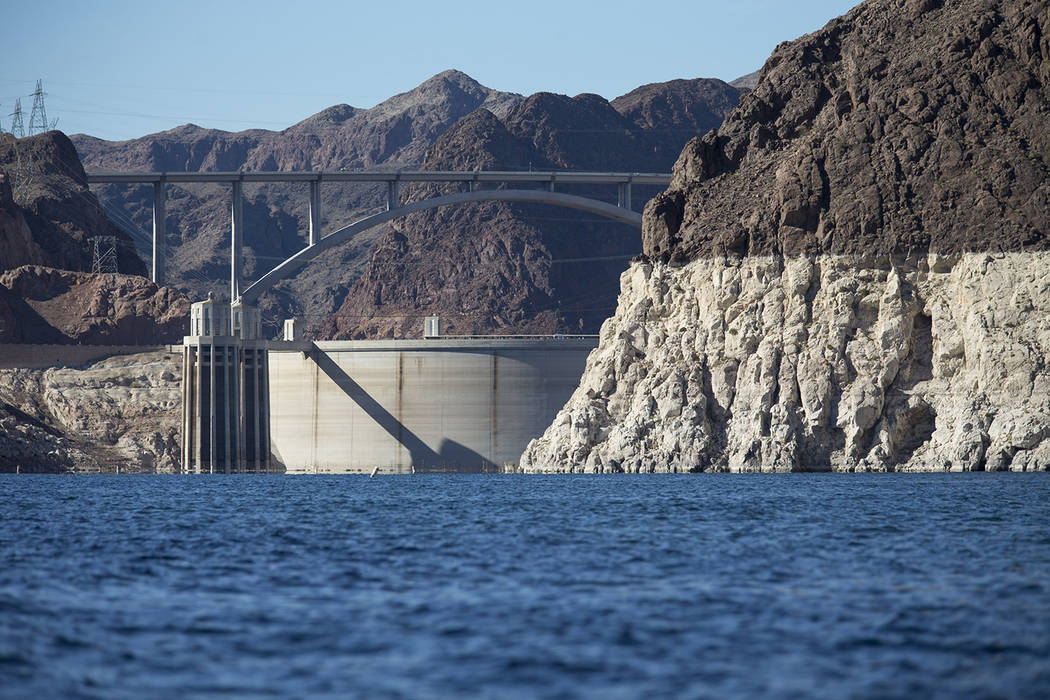Lake Mead forecast continues to brighten as water cuts are modeled

The outlook for Lake Mead continues to improve, as federal forecasters factor in the benefits from an unusually wet winter and a new interstate drought deal that will leave more water in the reservoir.
Instead of the familiar declines of recent decades, the lake east of Las Vegas now is expected to finish the year slightly higher than it is now, according to the latest estimates from the Bureau of Reclamation.
The projected water level of almost 1,086 feet above sea level by the end of December is about a foot higher than hydrologists were predicting a month ago.
Almost all of that difference can be traced to the extra water the reservoir will store because of the Drought Contingency Plans signed by the seven Colorado River states during a ceremony at Hoover Dam last month.
Arizona is slated to cut its Colorado River use by 192,000 acre-feet while Nevada cuts its use by 8,000 acre-feet in the coming year. That water will be left in Lake Mead to help slow its decline after 20 years of record drought on the over-allocated river.
One acre-foot is enough water to supply about two average Las Vegas Valley households for a little more than a year.
Bureau of Reclamation spokesman Doug Hendrix said this marks the first time the new voluntary drought cuts have been factored into the bureau’s running, two-year forecast for the Colorado.
Under a separate agreement not yet reflected in the projections, Mexico also is expected to cut its river use by 41,000 acre-feet and leave that water in Lake Mead next year.
“Mexico’s contribution under the new plan has not yet been modeled but will be factored in later this summer,” Hendrix said in an email.
The water forecast has steadily improved over the past several months, as snow kept piling up in the mountains that feed the river. Much of Colorado, New Mexico, Utah and Wyoming have seen above average accumulations, with record amounts of late-season snow in some areas.
The bureau expects the river to swell with about 144 percent of its average flow through July, as all that snow melts and runs downstream into Lake Powell, the reservoir on the Utah-Arizona border formed by Glen Canyon Dam. That would make this the second wettest year — and just the fifth with above-average river flows — since the current drought began in 2000.
In May, forecasters said they expected the projected flow through July to hit 129 percent of average. In March, they were essentially predicting an average year of river flow, and in February they were bracing for yet another below-average year.
Despite the improved short-term outlook, the water level in Lake Mead remains just 10 feet above the trigger point for a first federal shortage declaration on the Colorado River. Such a shortage would mean mandatory water reductions for Nevada and Arizona on top of the voluntary cuts the two states are set to take next year.
In the coming decades, climate scientists predict global warming could lead to prolonged droughts and diminished flows on the Colorado.
For the moment, though, the news is good. According to forecasters, this year’s snowy winter and spring all but guarantee that the river won’t see a shortage until 2021 at least.
Contact Henry Brean at hbrean@reviewjournal.com or 702-383-0350. Follow @RefriedBrean on Twitter.